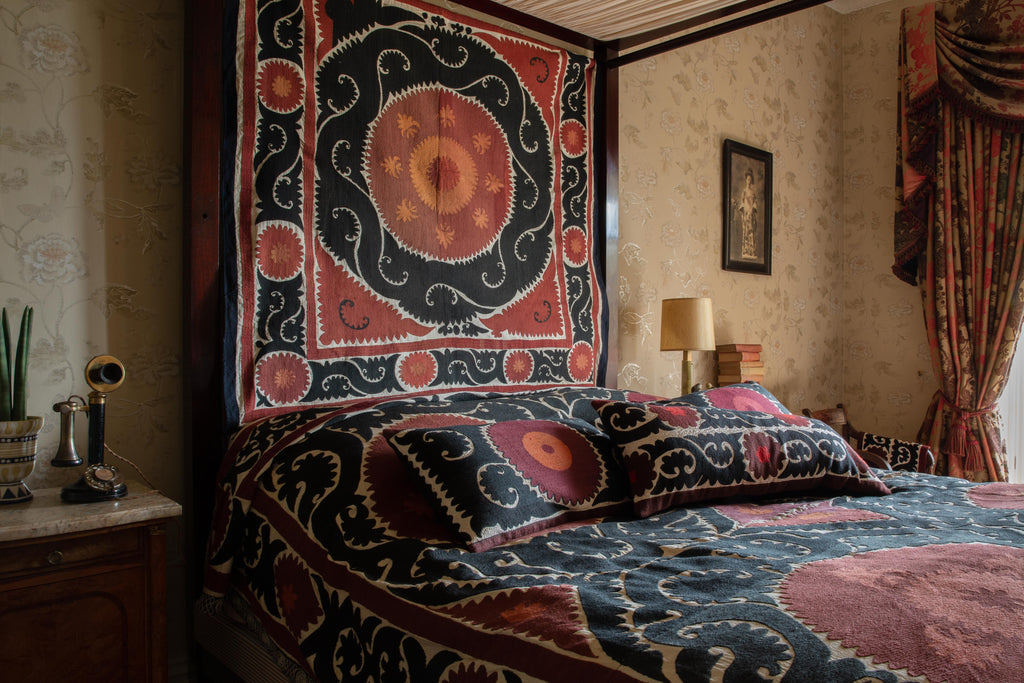Like pearls scattered along the Great Silk Road, the cities of Uzbekistan sparkle under the bright sun. This country is especially rich in historical artifacts due to its advantageous location in a picturesque oasis, positioned in the center of the ancient Silk Road network itself. Caravans carrying wondrous goods began to travel along the Silk Road in 138 BC, when China opened its borders to trade. These trade routes were integral not only to the exchange of products and crafts but also of culture, beliefs and knowledge. To this day within the walls of these historical cities like Samarkand, you can still hear the hum of voices, the ringing of a camel harness and the excitement of a day of trade ahead.

The word Ikat in the English language ultimately derives from Malay. It is a very ancient way of creating designs in fabric by resist-dyeing the threads before the fabric is woven. In Uzbekistan, Ikat is known as Abrband from the Persian “abr” - a cloud and “bind” – to tie – fabrics produced by this method are known as Abra fabrics.

A Suzani is a large, hand-embroidered textile panel. The term “Suzani” derives from the Farsi word for needle and needlework "suzanikari". Originating from nomadic tribes in Central Asia, suzanis have become highly collectable and valued for their beautiful decoration and fine craftsmanship. Suzanis have a symbolic significance and were traditionally made by brides and their mothers as part of a dowry, and presented to the groom on his wedding day. They represented the binding together of two families, and were adorned with symbols of luck, health, long life and fertility.